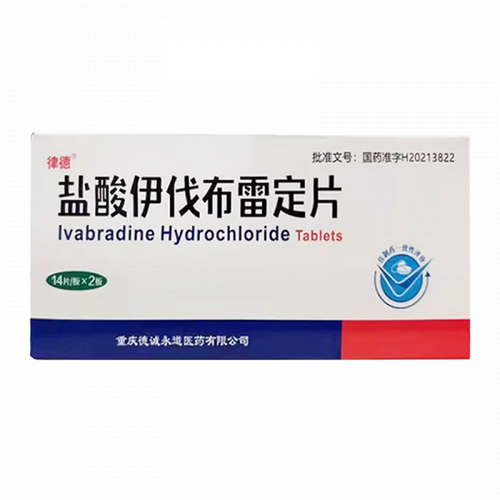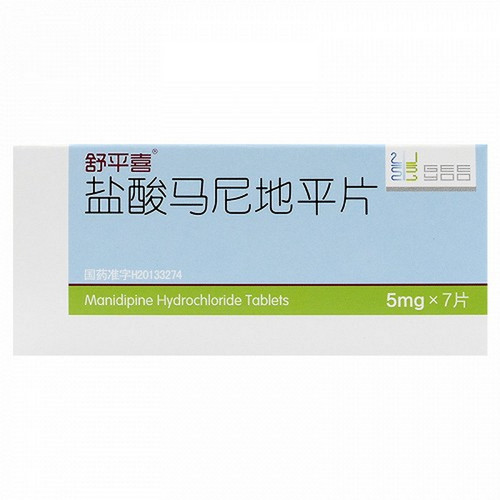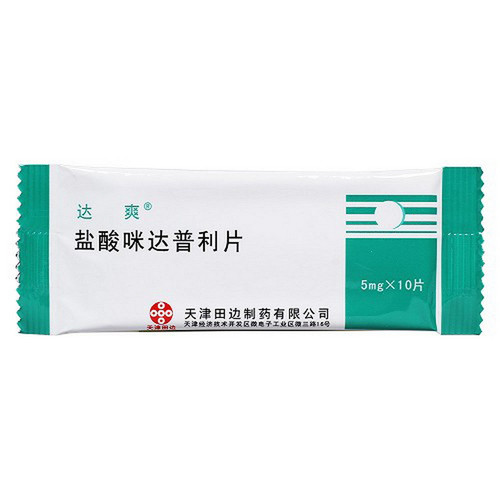Product Overview
[Drug Name]
Generic Name: Ivabradine Hydrochloride Tablets
Trade Name: Huanglong/Weiwen Ivabradine Hydrochloride Tablets 5mg x 14 tablets x 1 plate
[Main Ingredients]
The active ingredient of this product is ivabradine hydrochloride. Chemical Name: 3-(3-{(7S)-3,4-dimethoxybicyclo[4.2.0]octa-1,3,5-trien-7-yl)methyl]methylamino)propyl)-1,3,4,5-tetrahydro-7,8-dimethoxy-2H-3-benzazepin-2-one, hydrochloride. Molecular Formula: C27H36N2O5·HCl. Molecular Weight: 505.05. Excipients: Lactose (monohydrate), corn starch, maltodextrin, magnesium stearate, silicon dioxide, thin gel coating premix (gastric soluble).
[Appearance]
This product is an orange, oval film-coated tablet with a central "I" notch on each side. It appears white after removal of the coating.
[Indications/Main Functions]
It is indicated for patients with NYHA Class I-IV chronic heart failure who have sinus rhythm, a heart rate ≥75 beats/minute, and systolic dysfunction. It is used in combination with standard therapy, including beta-blockers, or when beta-blocker therapy is contraindicated or intolerant.
[Specifications]
5mg x 14 tablets
[Dosage and Administration]
Oral, twice daily, with meals in the morning and evening (see [Pharmacokinetics]). Initial treatment with this product is limited to patients with stable heart failure. It is recommended under the guidance of a physician experienced in treating chronic heart failure. The recommended starting dose is 5mg twice daily. After two weeks of treatment, if the patient's resting heart rate remains above 60 beats/minute, the dose should be increased to 7.5 mg twice daily. If the patient's resting heart rate remains below 50 beats/minute or symptoms related to bradycardia, such as dizziness, fatigue, or hypotension, the dose should be reduced to 2.5 mg (half a 5 mg tablet) twice daily. If the patient's heart rate is between 50 and 60 beats/minute, the dose should be maintained at 5 mg twice daily. During treatment, if the patient's resting heart rate remains below 50 beats/minute or symptoms related to bradycardia occur, the dose should be reduced from 7.5 mg or 5 mg twice daily to the next lower dose. If the patient's resting heart rate remains above 60 beats/minute, the dose should be increased from 2.5 mg or 5 mg twice daily to the next higher dose. If the patient's heart rate remains below 50 beats/minute or bradycardia symptoms persist, the drug should be discontinued (see [Precautions]). Special Populations: Patients with Renal Insufficiency: No dose adjustment is required for patients with renal insufficiency and creatinine clearance greater than 15 ml/min (see [Pharmacokinetics]). There are no clinical data on the use of this product in patients with creatinine clearance less than 15 ml/min; caution is advised when using this product in such patients. Patients with Hepatic Impairment: No dose adjustment is required for patients with mild hepatic impairment; caution is advised when using this product in patients with moderate hepatic impairment. There are no studies on the use of this product in patients with severe hepatic impairment; systemic exposure may be significantly increased after use in such patients; this product is contraindicated in patients with severe hepatic impairment (see [Contraindications] and [Pharmacokinetics]).
[Adverse Reactions]
See the package insert for details.
[Contraindications]
Hypersensitivity to the active ingredient or any of the excipients of this product; resting heart rate less than 70 beats per minute before treatment; cardiogenic shock; acute myocardial infarction; severe hypotension (<90/50 mmHg); severe hepatic insufficiency; sick sinus syndrome; sinoatrial block; unstable or acute heart failure; pacemaker-dependent (heart rate completely controlled by pacemaker); unstable angina; third-degree atrioventricular block; concomitant use with potent cytochrome P450 3A4 inhibitors, such as azole antifungal drugs (ketones); Concomitant use with verapamil or diltiazem, a moderate CYP3A4 inhibitor with heart rate-lowering effects (see [Drug Interactions]). Pregnant and lactating women, as well as women of childbearing potential who are not taking adequate contraceptive measures (see [Use in Pregnant and Lactating Women]).
[Precautions]
See package insert for details.









